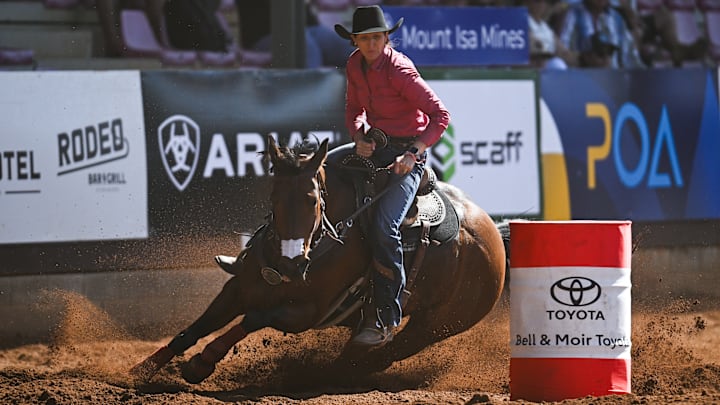For years, the western image of the Marlboro man was iconic. Movies furthered the image, with cowboys who smoked cigarettes, drank beer, stayed out all night, and lived a generally wild life on the road. While the depictions may have been accurate for some at the time and still for the select few of a dying breed - the modern rodeo cowboy has evolved with the times.

Today, many rodeo cowboys and cowgirls dream of making their living in the arena. Despite the seemingly large payouts fans may see them winning, the profit margins in rodeo are small. As you can imagine, driving cross-country for the majority of the year in a truck and trailer (both of which you can easily spend six figures on) loaded with horses that are also worth six figures, is not easy on the pocketbook.
That doesn't take into consideration everyday bills and expenses or entry fees. Yes - rodeo is a "pay to play" sport and contestants have to pay entry fees at every rodeo. It is also surprisingly easy to rack up fines for various (sometimes accidental or unavoidable) rule infractions. For many of these contestants, the breakeven point is not even reached until the National Finals Rodeo (NFR).
With only the top 15 cowboys and cowgirls in each event qualifying for the NFR, this leaves a large group of the Professional Rodeo Cowboys Association (PRCA) and Women's Professional Rodeo Association (WPRA) members in the red financially every year. A rodeo competitor's very livelihood is on the line each time they enter the arena and as competition grows stronger each year, they have risen to meet the standard.
In terms of athletic training and recovery - if you've seen professional athletes in any sport doing something, you can almost bet rodeo athletes are doing it now too. With today's technology, we have some of the best therapy and recovery tools ever available. Cowboys who quite literally take a beating riding roughstock utilize things like cryotherapy and mobility training. Ropers train in the gym to prepare their body for the quick and strong moves they need to make in the arena.
The women of rodeo are big on fitness too - one simply can't ride a horse of professional caliber without some serious core strength and balance. Running, hot yoga, weight training, and agility training are all popular choices amongst barrel racers who make their living on the rodeo road.
Rodeo athletes tend to prioritize eating well, not only to stay fit, but to keep their bodies well-fueled and healthy. Traveling constantly and spending so many hours driving can be stressful not only physically, but mentally. Mental game and preparation is another major focus for rodeo athletes. Most cowboys and cowgirls have their own rituals and routines to help them get in the game and maximize their performance.
Although rodeo events are timed in seconds, there are countless hours behind the performances we see in the arena on center stage.
